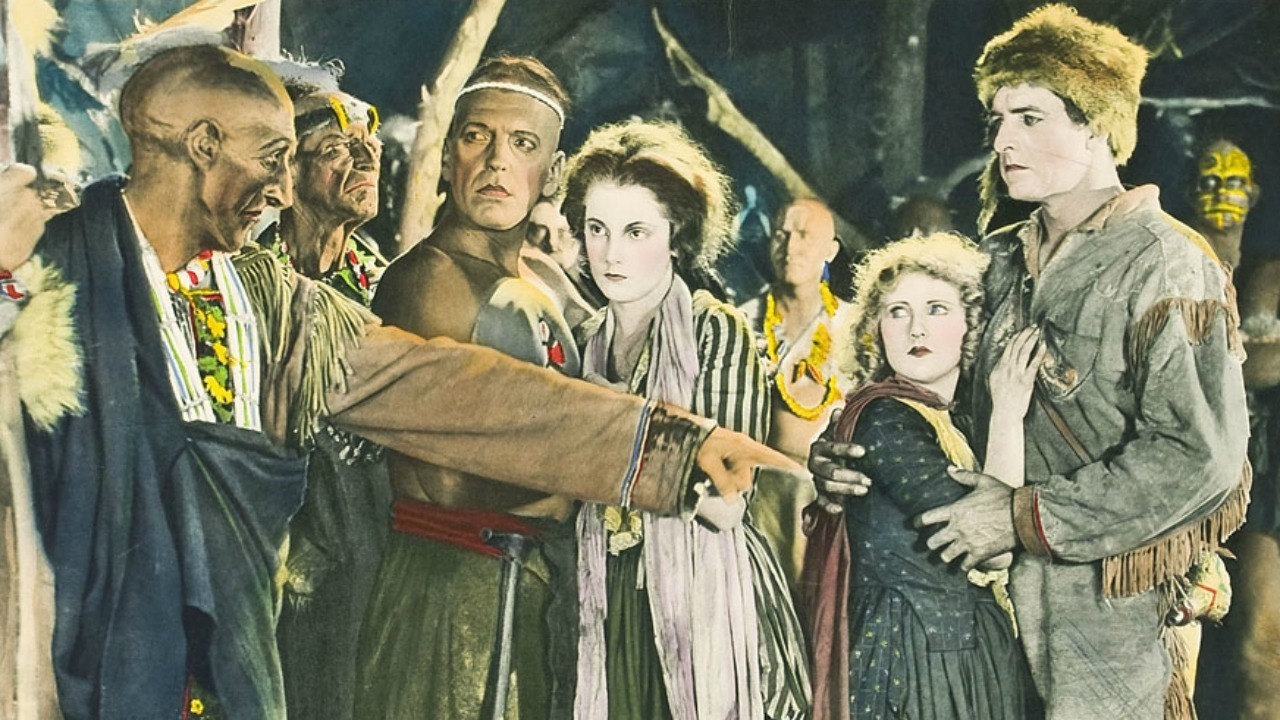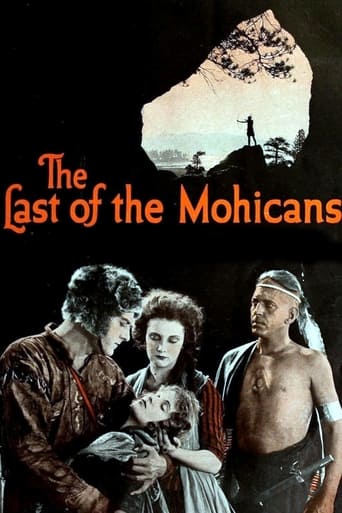

While the first half of the "The Last of the Mohicans" is rather run of the mill, the second half, beginning with the attack of the mass of drunken Indians against the British and French soldiers and civilians, is nothing less than astonishing. The explicit scenes of violence are some of the most spectacular ever filmed in black and white. There is no romanticization of war here. A baby is ripped from its mother's arms, and tossed high in the air to its presumed death. Wounded soldiers are attacked, tortured and massacred. Incredibly sickening, and it really draws you in.The most horrifying part of the battle is how long it goes on for. We are too trained in old films to expect the cavalry, or some other hero, to arrive before it is too late, before too many have lost their lives. Not here. The bloodbath goes on and on, men, women and children being hacked to death, and we finally realize, there IS NO cavalry to save them. The scenes of piles of corpses are amazing and captivating; I can't remember seeing anything quite like it in early cinema.The massacre scenes by themselves are enough to make this film memorable, but there is more: an incredible series of outdoor long-shots of a nightmarishly high cliff, with the tiny figures of the heroine and bad-guy Indian Wallace Beery on top, struggling, fighting, terrifyingly near the edge. This kind of scene, when done right, like it is here, always feels more dramatic in a silent picture, then it is with sound. The fight between Beery's Magua and the good Indian Uncas, quick as it is, also has an epic feel, taking place over a quick series of spectacular and varying landscape shots, down immense hills and titanic waterfalls. Remarkable indeed.A long forgotten actress, Barbara Bedford, plays the older dark-haired sister. She is actually quite beautiful, and the eye is drawn to her whenever she is on screen. Interestingly, IMDb credits her with over 200 movie roles, but once sound arrived, almost all of her remaining 100 roles were uncredited and/or in short subjects. Long forgotten.The movie suggests that quite a substantial number of civilians, including an surprising number of women, lived with the British soldiers in the colonies. I wonder if that is accurate. "Last of the Mohicans" really drives home how absolutely miserable it must have been to be living in the primitive forests of North America, at the whims of staggeringly extreme weather conditions, never mind the dangers posed by the Natives, thousands of miles from the comfortable, civilized, mild conditions of Britain. Interesting. And do the officers really never remove their white wigs, even in death?A highly recommended piece of cinema history, primarily for the historic battle scenes of the second half.
... View More"The Last of the Mohicans" is set "in the Year of Grace 1757", in what was to become the eastern United States. At that time, the "Indians" (aka Native Americans), English, and French were forming different warring alliances; mainly, they were trying to kill each other off, and gain control of the land. The "Indians" depicted in the film are "Mohican" and "Huron" Native Americans. The title gives away the fate of the Mohicans, who are depicted as a dying tribe, with a couple of remaining Chiefs. The "Indians" may have been dying off due to the absence of women among their tribes, which may also explain their constant lust for "white women", as shown throughout the film.The two main Indians are "Bad Indian" Wallace Berry (as Magua) and "Good Indian" Albert Roscoe (as Uncas). Dark-haired white woman Barbara Bedford (as Cora), who "underplays" to the point of comatose, is the main object they desire. Ms. Bedford and Good Indian Roscoe enjoy an "interracial" flirtation, which is also underplayed to the point of comatose. Mr. Berry is the most romantic member of the cast, employing a funny "come hither" look during one scene. A main storyline involves the task of rescuing Bedford and her Yellow-haired sister (Lillian Hall), and returning them to the safety of their British father.Along the way, a Huron massacre is shown; this is one of the film's gruesome highlights. "The Last of the Mohicans" main strength is that it is stunningly presented, by Maurice Tourneur. Mr. Tourneur's choice of story material may be lacking, but he always knows how to make films look beautiful. Clarence Brown, on his way to a successful career of his own, assisted. ***** The Last of the Mohicans (11/21/20) Maurice Tourneur, Clarence Brown ~ Barbara Bedford, Wallace Berry, Albert Roscoe
... View MoreThe Last Of The Mohicans" is a great savage adventure film (quite reminiscent of the sort of thing that happens with this German Count each time he ventures beyond the Schloss grounds) based on the classic American novel by James Fenimore Cooper. This vibrant film is as beautiful artistically (the film's natural locations are magnificent) as it is efficient technically (cinematography, film narrative). It is a perfect example of the adventure film genre as well the western film genre.This German Count must say that such efficiency and dynamism are due to the work of the great French film director Herr Maurice Tourneur and his disciple, Herr Clarence Brown.The first, Herr Tourneur (whose work this German Count is very fond of), worked in a most varied assortment of artistic disciplines (decorator, book illustrator, theatrical actor and even assistant to the French sculptor August Rodin) before beginning his film career, an artistic heritage that is well reflected in his films, especially those of the silent period. He endows his films with high pictorial quality and exquisite visual beauty, as is the case with "The Last Of The Mohicans." The five years spent by Herr Clarence Brown as Herr Tourneur's assistant director were certainly decisive for his career. The influence of the French director, especially the aesthetic influences referenced above, is noteworthy and can be seen particularly with regard to the extensive work of Herr Brown with the great silent diva Damen Garbo.And now, if you'll allow me, I must temporarily take my leave because this German Count must put on and perfectly adjust his stylish wig, which couldn't be more unlike the ordinary scalps that are seen in this film.
... View MoreThis review is not about the inaccuracies of the film, nor in the original novel; but, it is about the film music. A new edition of this film is available now with an entirely new film music score. The film itself has been remastered from a french nitrate master copy, by George Eastman House. The Slingshot and Miramax releases added a rather poor film score, with flute and synthesizer. A new version exists now, however, with an entirely new film score by a Mohican Composer, "The 1920 Classic Myth: The Last of the Mohicans" (2003) in 5.1 surround sound, re-scored for full orchestra, and American Indian instruments. Search for the newer version, and definitely check out this film!
... View More